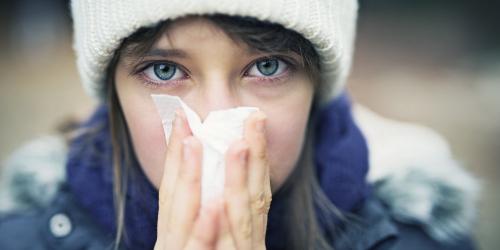If it is not dangerous, water retention is as uncomfortable as aesthetic depending on the areas of the body where it is nestled. Marie-Noëlle Bort, head of training at Guinot Mary Cohr, sheds light on this phenomenon and gives us some ideas to try to limit it.
What is water retention?
Water retention is an infiltration of water into the tissues (yes, we do not store only fat ...). It causes a feeling of heavy legs sometimes very oppressive and swelling, especially in the lower limbs (knees, calves) and ankles.
What causes water retention?
Retention has different origins, variable from person to person.
It can be the consequence of a poor circulation , a lymphatic dysfunction (caused by a congenital disease), a hormonal imbalance (rulers, pregnancy, menopause, inappropriate pill or hormonal treatment), a food imbalance ( too much salt and / or not enough protein, for example).
It can also occur near a body trauma such as a sprain, which would have caused inflammation.
How to prevent water retention?
"On the dietary side, we can already limit salt (starting by banishing prepared meals!), Make sure to hydrate and eat" draining "foods and other food supplements based on active ingredients such as witch hazel, red vine or frog ", advises Marie-Noëlle Bort.
The expert also recommends paying attention to the temperature of her environment (heat increases swelling), and slightly raising the legs when lying down. Direct sun and tight clothing are also to be avoided.
As for sport, the best allies against water retention are (just!) Water sports, such as aquabiking, with its long movements and gentle effort.
"Attention in contrast to diuretic products, which are still drugs!" Warns the professional.
What care to get rid of water retention?
In institute, as is the case in the establishment Mary Cohr, it is thanks to devices such as the Technispa are provided care called "light legs" . This type of protocol aims to "revive the circulation of the return, drain, and infiltrate the tissues with its double lipo-aspiration function", explains Marie-Noëlle Bort, while bringing a feeling of freshness thanks to the veinotonic assets contained in the acti-serum applied beforehand. "What limit, in the short term, the sensation of heavy legs.
There are also typical manual treatments such as lymphatic drainage , a massage that evacuates liquid excess from the body by stimulating the circulation of the lymph and thus the evacuation of the toxins it carries. This drainage can be performed in an institute or at a physiotherapist's home.
The so-called "active" drainage is also recommended, it works the deep muscles through a gentle sport activity - such as aquabiking - and improves circulation while decreasing water retention.
As a draining care, we can also rely on pressotherapy (we put on XXL boots inflated with air that will act on the venous ciruclation), or cryotherapy treatments, which rely on the techniques of well-being and fitness related cold to soothe the sensations of heavy legs.
Some house tricks to relieve water retention
In everyday life, Marie-Noëlle Bort has some tips to better live the water retention. "For a quick relief, you can regularly apply light leg products with an immediate icicle effect during the day, and even better, put the product in the fridge during hot weather!"
Other tips easy to put into practice: the cold water jet at the end of the shower, the elevation of the legs as soon as you are lying down, avoid crossing your legs or the wearing of stockings, especially if you take the 'plane.
"You can massage your legs starting from the arch and then go up along your leg, and of course, try to move in. Do not hesitate to walk or better, to swim!"



